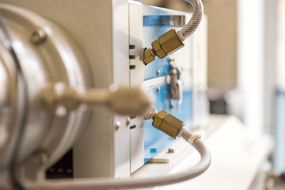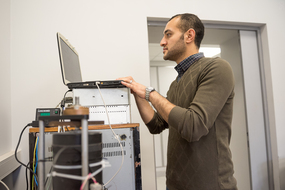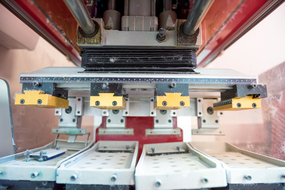An international research group has developed a new radar absorbing polymer composite with Exfoliated Graphite (EG)/Barium Aluminum Hexaferrite (HF) fillers. The new composite has excellent magnetic and microwave properties. It can absorb 99.9% of the incoming electromagnetic radiation, which makes it a promising absorption block in electromagnetic interference (EMI) shielding applications. The study was published in Journal of Alloys and Compounds.
The scientists from NUST MISIS, South Ural State University and Joint Institute for Nuclear Research together with colleagues from Egypt, Saudi Arabia and Belarus have obtained a radar absorbing polymer composite with Exfoliated Graphite (EG)/Barium Aluminum Hexaferrite (HF) fillers. The new composite has a wide range of potential applications, from 5G networks to radar absorbing coatings. The obtained material effectively minimizes the intensity of the reflected signal, becoming undetectable in the microwave region.
“The high absorption coefficient was achieved by combining a magnetic dielectric filler (barium gesaferrite) and a diamagnetic conductive filler (nanographite). It is this idea (a combination of powdery filler materials with fundamentally different electrodynamic characteristics in the formation of functional composites) that has novelty and relevance. Today, the ‘age of single-phase materials’ is coming to its end. It should be noted that to obtain this result, a lot of work was done on the study of substituted barium hexaferrites. Thus, complex studies of the correlation of chemical composition, structural features, electrical, magnetic and microwave properties of a wide range of solid hexaferrite solutions were carried out. The most optimal chemical compositions for the synthesis of the composite were selected. The new composite material has excellent shielding properties, and, at the same time, is characterized by lightness, flexibility, chemical stability and good compatibility with various polymer matrixes,” noted Aleksey Trukhanov, Ph.D., the NUST MISIS College of New Materials and Nanotechnologies.
Polyvinylidene fluoride (PVDА) was used as the matrix of the composite. PVDF is a valuable polymer due to its chemical stability, resistance to organic solvents, and high elastic modulus compared to other polymers. The PVDF was used for preparing the composite to overcome the main disadvantages of hexaferrite, like fragility and the inability to be easily manipulated into the desired shapes.
The scientists found that the optimum weight percentage of HF and PVDF is 15 wt% PVDF + 85 wt% HF. The EG concentration should not exceed 5 wt%. High concentration may expand agglomeration and porosity inside the finished material and give inaccurate measurements. The new composite can be used as electromagnetic shielding for the incident electromagnetic radiation with more than 99% attenuation.






